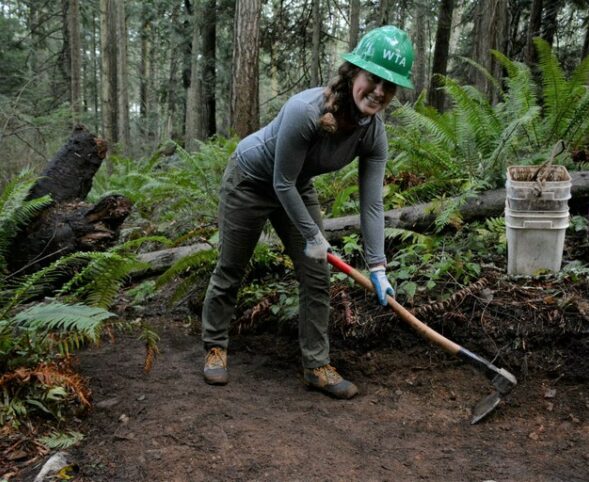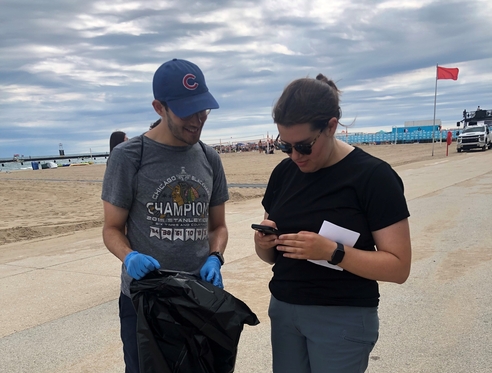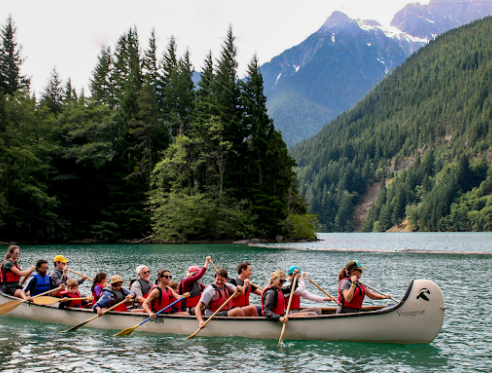About Washington Trails Association
As the nation's largest state-based hiking nonprofit organization, Washington Trails Association (WTA) is the voice for hikers in Washington state. They protect hiking trails and wildlands, promote hiking as a healthy, fun way to explore the outdoors, and organize volunteers to maintain trails.
When we say they organize volunteers, we mean A LOT of volunteers. In 2015, 4,400 WTA volunteers worked on building and maintaining trails through their trail stewardship programs. That’s a ton of folks to coordinate and manage, and the number is even more impressive because most of the coordinating and management is also done by volunteers.
When you build and maintain trails you need good physical tools...shovels, pulaskis, mcleods, corona saws, and loppers. When you coordinate and manage volunteers you also need good tools. That’s where Percolator came in.
The Problem
WTA’s aging volunteer work party management database (“Volunteer Access”) was an amazing Perl-based workhorse that had been built and maintained by a volunteer and functioned dutifully for 12 years (an eternity in technology years!). It was now limping along and held together by duct tape, and the faithful volunteer who had maintained it was ready to retire. Although an antiquated platform, Volunteer Access featured some complex functionality, and the WTA team knew it would be a heavy lift to rebuild. And they didn’t just want rebuild it—they had a long wishlist of improvements.
One of the primary improvements they hoped for was better integration with their Plone-based website and their CRM (Salesforce). WTA website users can create profiles (called “My Backpack”) where you can see the trails you’ve saved and/or hiked, the trail reports and photos you’ve submitted, your membership status and more. What you couldn’t see in “My Backpack” was your volunteer activity. Trail stewardship volunteering is central to WTA’s mission so ensuring volunteer activities were included in “My Backpack” was crucial.
WTA staff also spent countless hours doing double data entry or working from paper forms that they wanted automated. Finally, volunteer crew leaders are the heart of WTA’s trails stewardship program and they needed better tools to make their work sustainable.
The Solution
Working in collaboration with the smartypants developers at Jazkarta and the great UX designers at Ethical UX, we conducted an in-depth discovery process. We reviewed every square inch of their existing system. We interviewed the staff who would wield the new system from the backend, and to the volunteer leaders who would need different levels of permissioning on the frontend to manage volunteer rosters, submit work party reports, etc. Darrell Houle from Ethical UX registered for and then spent a day on a trail work party, talking to other volunteers and getting a little trail building in. We developed all the user stories for the project and reviewed options for the technical architecture, ultimately recommending that the platform be built using Salesforce and Pyramid.
It took a year to implement, during which time the WTA team stayed actively involved in the code development through prioritization, review, and testing. We launched version one of the platform in February of 2016, and then after six months of use, WTA was able to do a second round of improvements in the fall.
The Results
Big technical wins:
Using WTA's Plone site navigationally, Pyramid as the frontend, and Salesforce as the backend database means the system doesn’t have to rely on API calls to keep data synced in Salesforce. This structure increased development efficiency, and overall the system is less brittle.
The Pyramid/Salesforce architecture provides the most straightforward Single Sign-on solution with their existing Plone website (where users already had usernames and logins).
The architecture is very flexible, providing the developers with many options for building out the app’s features now and in the future.
The platform allows for maximum control over hosting and caching, which means better performance.
We had excellent options for building out faceted search.
The platform can be updated and maintained separately from wta.org, which avoids a lot of complexity and potential pitfalls.
Big non-technical wins:
Much better user experience for signing up for work parties: in 2016 WTA experienced a 7% annual growth in number of volunteers and hours worked (for a total of 4,700+ volunteers working 149,742 hours), and the new platform was key to helping them realize this growth while maintaining a positive volunteer experience.
Much easier to manage as a volunteer crew leader on the frontend and much easier to set up from the staff perspective in Salesforce: WTA staff and volunteer leaders coordinated over 1,050 individual work parties throughout the year (that’s almost 3 per day if averaged over 365 days!).
It’s all now in Salesforce! No double data entry! Metrics and reporting are so easy and were built to the WTA team’s specifications. WTA recorded over 20,300 individual registrations, 63% of those (12,869) were completed (as opposed to registrations that were Waitlist, Canceled, etc). That’s a huge volume of work that prior to the new platform was all hand-entered into Salesforce.
360 degree view of constituents without a lot of manual work, and all volunteer activity easily feeds into both the volunteers personal “My Backpack” profile and StepUp which WTA uses to track supporter engagement.
Finally, an unexpected but welcome outcome came from adding a work party Waitlist feature. The Waitlist feature has helped WTA realize the pent-up interest in work parties and has been useful for future scheduling and understanding underserved demand and potential.
You can check the platform out here (and sign up for a little trail work, too).
THE SOLUTION
We developed all the user stories for the project and reviewed options for the technical architecture, ultimately recommending that the platform be built using Salesforce and Pyramid.
AT A GLANCE
7% annual growth in number of volunteers and hours worked




